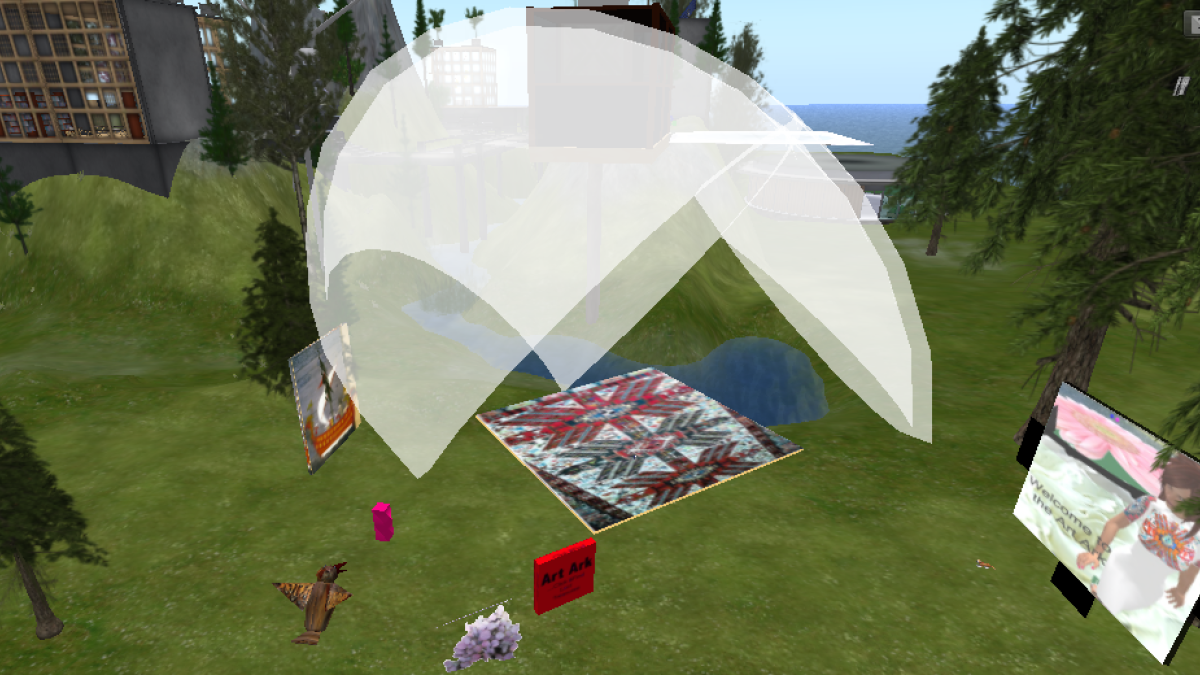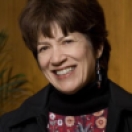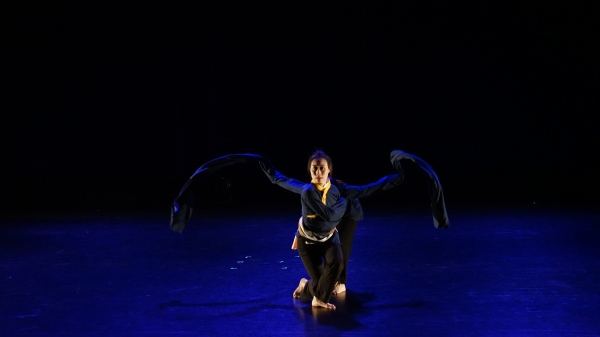Teaching art in another world
ASU professor is an expert in 'virtual world' education

You can open a book and look at a picture of an artistic masterpiece or, in a virtual world, you can soar inside a 3-D version and become part of it.
An Arizona State University professor has become an expert in teaching via virtual worlds — computer-based simulated environments where users create avatars, which are online versions of themselves.
Mary Stokrocki, an art education professor in the School of ArtThe School of Art is part of the Herberger Institute for Design and the Arts., has created artistic worlds not only for the ASU students she teaches but also for children and senior citizens. She teaches primarily in the Second LifeSecond Life is a virtual online world where users can explore the environs via digital avatars of themselves, or other creations. The service has more than 1 million users. virtual world.
“Everyone thinks this is a game,” Stokrocki Stokrocki was named the 2015 Kenneth Marantz Distinguished Fellow for the U.S. Society for Education Through Art. She also was the editor of the 2014 book “Exploration in Virtual Worlds: New Digital Multi-Media Literacy Investigations for Art Education.” said. “It’s a multi-use platform. There is multi-literacy — many ways to communicate, including music and dance.”
Stokrocki was named the 2015 Kenneth Marantz Distinguished Fellow for the U.S. Society for Education Through Art. She also was the editor of the 2014 book “Exploration in Virtual Worlds: New Digital Multi-Media Literacy Investigations for Art Education.” said. “It’s a multi-use platform. There is multi-literacy — many ways to communicate, including music and dance.”
The virtual worlds are practical. Students can communicate with peers around the world and explore textures and spatial design instantly. And they can build sculptures or architecture in Second Life that can be created in real life using a 3-D printer.
Much of Stokrocki’s work is done across cultures, including several months teaching “digital ethnography” in Taiwan as a Fulbright Scholar, when she had students create an art exhibit about their country in Second Life.
She has also worked with Navajo and Apache students and participated in a virtual-world project at a charter school in Apache Junction.
Using avatars can transform students and free them to open their minds about themselves, she said.
“I worked with 80-year-olds. In real life, no hair. In Second Life, hair. Tattoos up and down their avatar bodies,” she said.
At first, students hesitate.
“But then they’re fearless,” she said.
Her own avatar is the Lizard of Ars — “ars” is Latin for “art.” Her space in Second Life is called Art Ark (seen in the photo at top).
In class, students learn to search out the masterpieces in the virtual world, like treasures, she said.
"At first they don't know what they're looking for. Our job is to teach them to see.”
More Arts, humanities and education

Sociology student passionate about preventing domestic and gender-based violence
Editor’s note: This story is part of a series of profiles of notable spring 2024 graduates. With so many diverse career options available to students, uncovering individual passions and ambitions is…

ASU Wind Symphony’s performance at regional conference motivates, inspires
ASU Wind Symphony students describe their recent performance at the College Band Directors National Association, or CBDNA, Regional Conference in Las Vegas and the journey that led them there as “…

Spring Dance Fest features guest artists, student choreographers
The School of Music, Dance and Theatre will premiere two new works by guest artists Michele Byrd-McPhee and Frankie Martinez at this year’s Spring Dance Fest. Arizona State University students will…